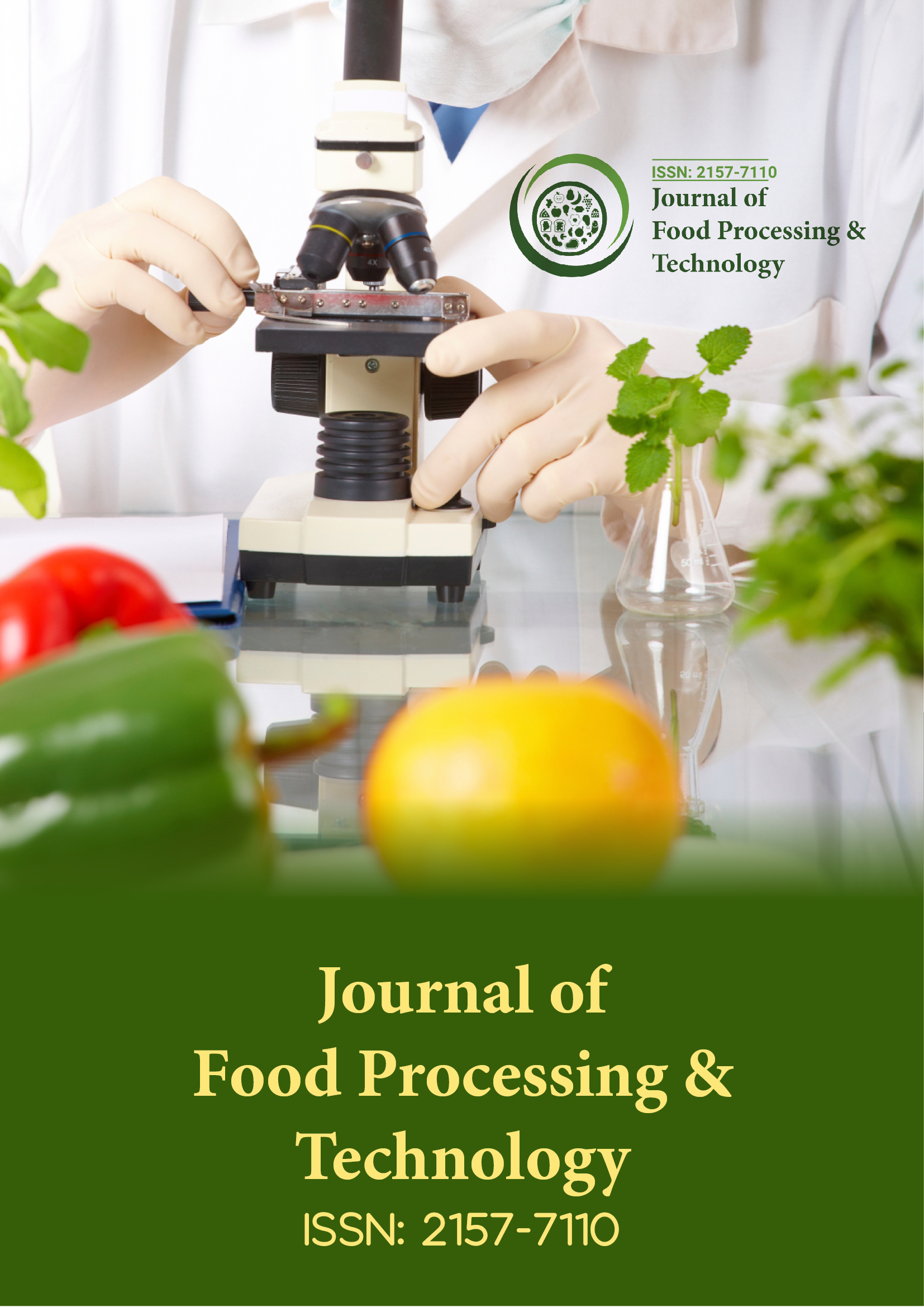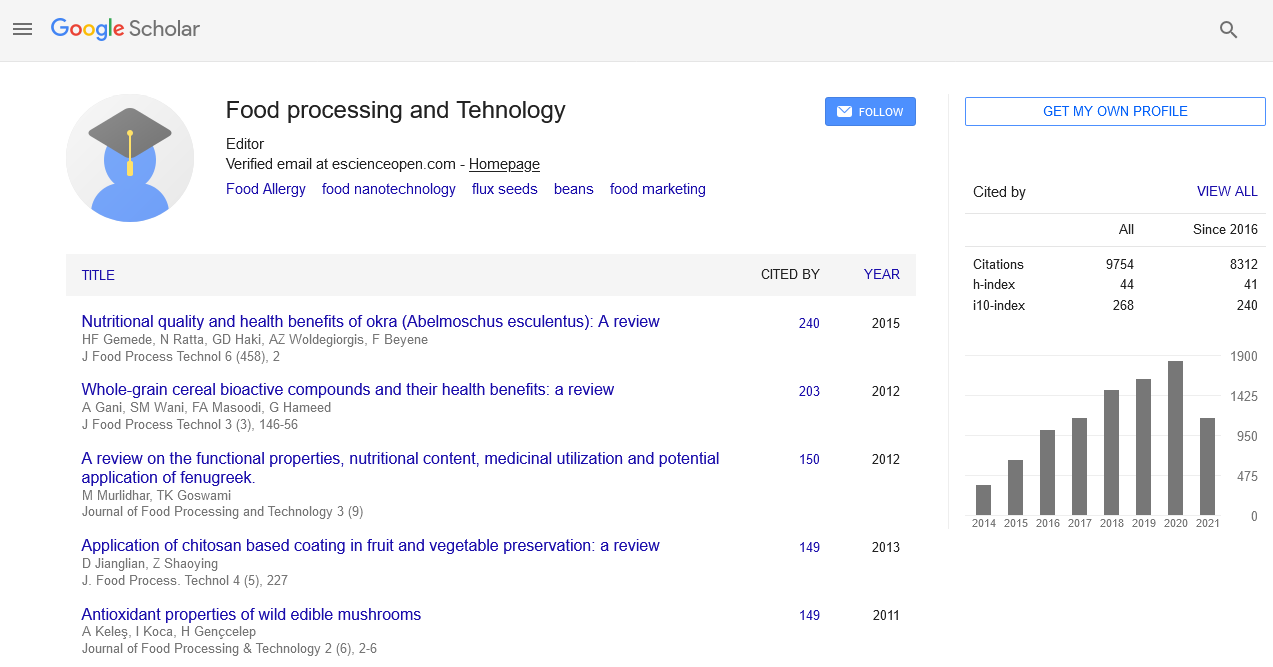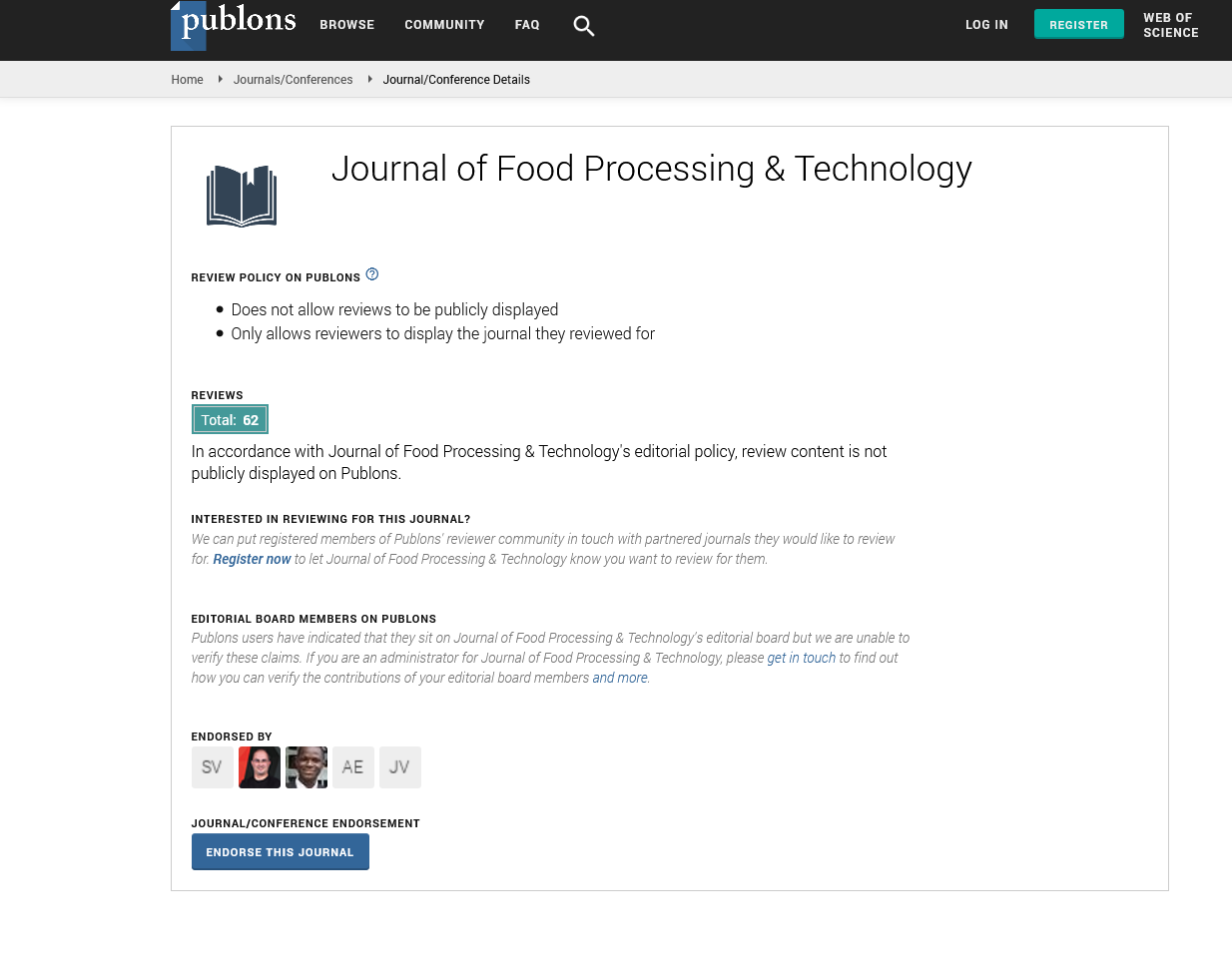Indexed In
- Genamics JournalSeek
- Academic Keys
- JournalTOCs
- China National Knowledge Infrastructure (CNKI)
- Access to Global Online Research in Agriculture (AGORA)
- Centre for Agriculture and Biosciences International (CABI)
- RefSeek
- Directory of Research Journal Indexing (DRJI)
- Hamdard University
- EBSCO A-Z
- OCLC- WorldCat
- Scholarsteer
- SWB online catalog
- Publons
- Euro Pub
- Google Scholar
Useful Links
Share This Page
Journal Flyer

Open Access Journals
- Agri and Aquaculture
- Biochemistry
- Bioinformatics & Systems Biology
- Business & Management
- Chemistry
- Clinical Sciences
- Engineering
- Food & Nutrition
- General Science
- Genetics & Molecular Biology
- Immunology & Microbiology
- Medical Sciences
- Neuroscience & Psychology
- Nursing & Health Care
- Pharmaceutical Sciences
Opinion Article - (2023) Volume 14, Issue 4
Analysing the Potential of Nanotechnology in Food Safety Packaging
Yang Shuo*Received: 30-Mar-2023, Manuscript No. JFPT-23-21294; Editor assigned: 03-Apr-2023, Pre QC No. JFPT-23-21294 (PQ); Reviewed: 18-Apr-2023, QC No. JFPT-23-21294; Revised: 27-Apr-2023, Manuscript No. JFPT-23-21294 (R); Published: 05-May-2023, DOI: 10.35248/2157-7110.23.14.1009
Description
Nanotechnology is an emerging field of science and technology that uses tiny tools and materials to create new and improved products. One of the most promising applications of nanotechnology is in the area of food packaging safety. By using nanomaterials, food packaging can be made safer and more efficient. Some of the benefits of nanotechnology in food packaging include improved safety, extended shelf life, and improved environmental performance. In terms of safety, nanomaterials can be used to create packaging that is resistant to bacteria, viruses, and other contaminants. This can help to reduce the risk of food contamination and ensure that food is safe to eat. Additionally, nanomaterials can be used to create packaging that is highly resistant to punctures and other damage. This can help to extend the shelf life of food and reduce food waste. In terms of environmental performance, nanomaterials can be used to create packaging that requires less energy and resources to produce. This can help to reduce the environmental impact of food packaging and ultimately reduce the amount of resources used to package food. Additionally, nanomaterials can be used to create packaging that is biodegradable or recyclable. This can help to further reduce the environmental impact of food packaging. Nanotechnology has the potential to revolutionize the food packaging industry. By utilizing nanomaterials, food packaging can be made safer, more efficient, and more environmentally friendly. This can help to ensure that food is safe to eat and reduce the environmental impact of food packaging. Nanotechnology has been widely used in the food and beverage industry for a variety of applications. The most common application of nanotechnology in food packaging is to improve the safety and shelf life of food products. This technology has allowed manufacturers to create packaging materials that are more resistant to contamination and spoilage, while also providing improved product quality. Nanotechnology has enabled the creation of more effective food packaging materials that are resistant to moisture, oxygen, grease, and other contaminants. In addition, nanotechnology can also be used to create packaging materials that can reduce the risk of food contamination by preventing the growth of microorganisms.
Nanotechnology is also used to create packaging materials that have improved barrier properties. This means that the material can keep oxygen out, thus preserving the quality of food for a longer period of time. Nanotechnology can also be used to create packaging materials that are more durable and flexible, allowing for easier storage and transport. In terms of safety, nanotechnology has been used to create packaging materials that can detect and prevent the growth of harmful bacteria, viruses, and fungi. By using nanotechnology, food packaging can be designed to not only prevent contamination, but also detect it and alert the user of any potential contamination. Overall, nanotechnology is a powerful tool that has the potential to revolutionize the food packaging industry. By using nanotechnology, manufacturers can create packaging materials that are stronger, safer, and longer-lasting. This technology can also be used to create packaging materials that are more resistant to contamination and spoilage, thus improving the safety and shelf life of food products.
Challenges of nanotechnology in food packaging
Nanotechnology has the potential to revolutionize food packaging safety, but there are still numerous challenges that need to be addressed before it can be fully implemented. One of the most significant issues is the lack of standardization in the production of nanomaterials. Because nanomaterials are so small, they can be difficult to control and manipulate in a consistent and reproducible manner. As such, there is still much study and development needed in order to ensure that nanomaterials are produced and applied safely in food packaging. Another challenge is the limited understanding of how nanomaterials interact with food products. Nanomaterials can be used to enhance the barrier properties of packaging, but there is still much to be learned about how these materials interact with food and the potential health risks associated with them. Safety testing and regulations are essential to ensure that nanomaterials are safe for use in food packaging. Finally, cost is another factor to consider. Many of the processes involved in applying nanotechnology to food packaging are still not costeffective, which limits their widespread adoption. Cost-effective methods need to be developed in order to make nanotechnology a viable option for food packaging safety.
Citation: Shuo Y (2023) Analysing the Potential of Nanotechnology in Food Safety Packaging. 14:1009.
Copyright: © 2023 Shuo Y. This is an open access article distributed under the terms of the Creative Commons Attribution License, which permits unrestricted use, distribution, and reproduction in any medium, provided the original author and source are credited.


